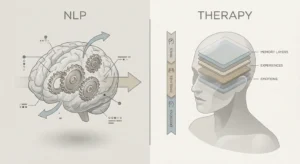Disappointment is often seen as something to avoid a sign that something went wrong. But it’s not the setback itself that causes the most trouble; it’s how it’s handled.
In both personal growth and professional life, these moments tend to surface when least expected. They challenge assumptions, test patience, and often raise uncomfortable questions.
In this article, we will walk you through how working through disappointment can lead to genuine happiness that is grounded, lasting, and often more meaningful than the goals that triggered the setback in the first place.
So read on because what feels uncomfortable now might be exactly what leads somewhere better.
The Psychology Behind Disappointment
Disappointment usually shows up when there’s a gap between what was expected and what actually happened. The mind builds a picture of how things should go. When reality doesn’t match, that emotional drop hits hard.
It isn’t just frustration it’s a reaction wired deep in the brain. People naturally plan, imagine, and predict. When the outcome doesn’t match the effort or belief, the brain flags it as a problem. That “let down” feeling is more than a mood; it’s a signal.
But not all signals are meant to stop us. Some are meant to slow us down, ask better questions, or see what was missed. Disappointment is one of them. It’s often the mind’s way of asking, What now? What’s next? Understanding this response isn’t about avoiding it. It’s about recognizing that it’s normal and maybe even useful.
Why Avoiding Disappointment Keeps You Stuck
Most people don’t like sitting with disappointment. It’s uncomfortable, inconvenient, and often misunderstood as weakness. So the instinct is to brush it off and move on quickly.
But that habit can quietly hold people back. Here’s how:
- Important lessons get missed. Disappointment often highlights what didn’t work and why. Ignoring it means missing the chance to learn and adjust.
- Patterns start to repeat. Without reflection, the same choices lead to the same results. What looks like “bad luck” is often just an unresolved loop.
- Decisions become reactive. Avoidance creates pressure to move fast, without clarity. That pressure leads to rushed goals and short-term thinking.
- Frustration builds beneath the surface. When things are left unresolved, stress doesn’t disappear it just gets harder to explain. That weight shows up later in ways that slow down momentum.
Avoiding disappointment might feel like staying strong. But in reality, it creates a cycle of uncertainty, distraction, and delay.
The Path from Disappointment to Happiness
Disappointment doesn’t disappear on its own. But when it’s handled with awareness, it can lead to something more stable than just feeling better; it can lead to a deeper kind of happiness. Here’s how that shift often happens:
Recognize the Feeling Without Judging It
Most people are quick to label disappointment as failure. But it’s just a signal that something didn’t match the expectation. That doesn’t mean something is wrong with you.
- Pause before reacting
- Notice the emotion without rushing to fix it
- Let it surface without turning it into a story
Look at What It’s Pointing To
Disappointment usually highlights something important: a value, a goal, or a belief that matters. Ask yourself:
- What outcome was I attached to?
- Was that goal realistic or based on pressure or comparison?
- What matters most to me now?
This is where clarity starts to take shape.
Shift the Meaning, Not Just the Mood
Trying to “feel better” doesn’t work for long. But changing the way you see the experience can.
- Was this a loss or a redirection?
- What did this reveal that wasn’t obvious before?
- How can this help me make a smarter next move?
This step is where many coaching and NLP methods come into play, helping people reframe, not just recover.
Use the Energy to Refocus
Once the emotion has settled, disappointment often leaves behind something useful: energy. That tension can turn into drive if it’s redirected.
- Reset the goal.
- Adjust the plan.
- Take one clear step forward.
Not every disappointment leads to a breakthrough, but many do, when they’re given the space to shift from reaction to reflection.
How Embracing Disappointment Enhances Leadership & Coaching

Disappointment isn’t just a personal emotion; it shows up in boardrooms, coaching sessions, and client calls. Leaders and coaches who understand how to work with it, instead of avoiding it, often lead with more clarity, trust, and long-term impact. Here’s how:
It Builds Credibility Through Honesty
People follow leaders who feel real. Clients trust coaches who don’t pretend to have it all figured out. When disappointment is acknowledged instead of hidden:
- It shows humility, not weakness.
- It opens the door to honest conversations.
- It helps others feel safe bringing their own challenges forward.
It Strengthens Emotional Awareness
Strong leaders and coaches notice what’s happening beneath the surface, both in themselves and others. Disappointment sharpens that skill.
- It highlights emotional blind spots.
- It helps spot unrealistic expectations before they cause friction.
- It teaches when to pause, reset, or adjust without panic.
It Creates Space for Growth Moments
Disappointment often becomes a turning point, especially in coaching. When someone hits a wall, it usually means they’ve outgrown an old way of thinking. Effective coaches use that moment to:
- Ask better questions.
- Reframe the meaning of the setback.
- Help clients shift from frustration to clarity.
It Reinforces Long-Term Thinking
Quick wins feel good, but they fade fast. Working through setbacks builds endurance, focus, and strategy.
In both leadership and coaching, learning to work through disappointment encourages:
- Smarter decision-making.
- Clearer vision.
- Stronger alignment between values and actions.
Practical Tools to Turn Disappointment Into Happiness

Big mindset shifts often start with small, consistent habits. Disappointment may feel heavy in the moment, but how it’s handled afterward makes the biggest difference.
Here are some simple tools that help turn difficult moments into something more useful:
Journal with Purpose, Not Pressure
Writing things down isn’t just about venting; it’s about seeing clearly. Try this:
- What was I expecting?
- What actually happened?
- What does this reveal about what I value?
This kind of reflection turns disappointment into insight and helps break emotional loops that feel stuck on repeat.
Use Grounding Techniques When Emotion Peaks
When the emotional response is strong, the nervous system needs to settle before the mind can think clearly. A few effective ways to reset:
- Deep breathing (4 counts in, 4 hold, 4 out).
- Placing both feet on the floor and noticing five things in the room.
- A short walk without distractions or devices.
These quick resets create space between the feeling and the reaction.
Visualize a Different Ending Without Forcing Positivity
Instead of ignoring what happened, take a few minutes to revisit the situation with a different outcome mentally. Ask:
- What would I do differently next time?
- How would the best version of me respond to this?
This kind of visualization, used in many coaching and NLP approaches, helps the brain form new patterns without pretending things didn’t go wrong.
Anchor Progress with Small Wins
After a disappointment, it’s easy to feel like everything is off track. That’s when it helps to zoom in. Try:
- Listing 3 small things that are working.
- Taking one action step, no matter how minor.
- Noticing what hasn’t gone wrong.
This grounds momentum and reminds the brain that progress doesn’t disappear because of one setback.
Conclusion
Disappointment is a part of life that no one asks for but everyone faces. It shows up quietly, often unexpectedly, and tends to stay longer than it’s welcome. But for those who choose to engage with it, rather than avoid it, it can become something far more than just a difficult emotion.
Handled with awareness, it brings clarity. With reflection, it offers direction. And with the right tools, it can even become a turning point.
In professional settings, the ability to process disappointment clearly is often the difference between reactive decisions and steady, focused leadership. Developing emotional resilience and self-leadership skills, often taught in mindset coaching or emotional intelligence training, can help turn setbacks into forward movement, both in business and life.
Happiness, it turns out, isn’t found in perfect outcomes; it’s shaped by how people move through the imperfect ones.
Frequently Asked Questions: How Embracing Disappointment Can Help You Thrive
Q1: Why is embracing disappointment important for personal growth?
Embracing disappointment helps you recognize unmet expectations as signals for growth, fostering emotional resilience, perspective shifts, and deeper self-awareness turning setbacks into catalysts for meaningful development.
Q2: How do you embrace disappointment step-by-step?
First, acknowledge how you feel. Reflect on the “why,” write your insights, evaluate recurring patterns, then take deliberate action to reframe your mindset and grow from the experience.
Q3: Is it safe or emotionally healthy to fully embrace disappointment?
Yes. Embracing disappointment is emotionally healthy when done mindfully: recognizing it without judgment helps you process emotion healthily, avoid toxic rumination, and build coping skills.
Q4: How much time or effort does it take to benefit from embracing disappointment?
Effort varies. Even brief reflection like journaling or reframing thoughts for a few minutes can shift perspective and boost emotional resilience incrementally over days or weeks.
Q5: What are alternatives to embracing disappointment?
Alternatives include suppressing emotions, lowering expectations to avoid hurt, or ignoring disappointment. These may offer temporary relief but often hinder growth and emotional maturity.





